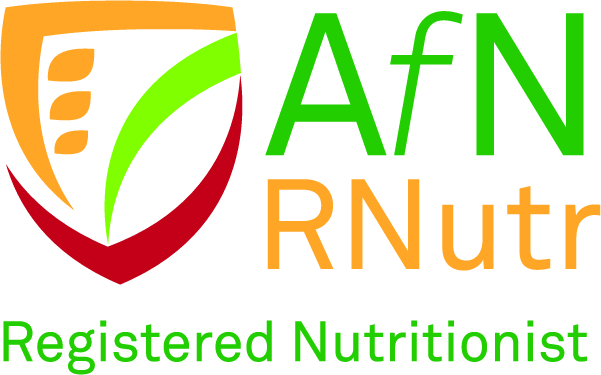Top Tips for a Healthy Family Breakfast
Are you looking for ways to create a healthier and more nutritious breakfast for your family?
In this blog, you’ll find all my top tips for how to create a healthy and nutritious family breakfast that everyone can enjoy.
From how to choose a nutritious cereal to more elaborate sweet and savoury breakfast recipes, you’ll find something for everyone.
So keep reading to start your family’s day off with a delicious, healthy breakfast!
Choosing a Healthy Breakfast Cereal
Breakfast cereals are a convenient, fuss-free option in the morning – but many of those aimed at kids are high in sugar, low in fibre and often don’t keep them full for very long!
However, I believe that all foods can have a place in a healthy balanced diet and this definitely applies to cereals too.
Most breakfast cereals are fortified with key nutrients such as iron, vitamin B12 and vitamin D, and they can be a great source of energy to start your day. So please don’t feel that you should stop buying them if you or your children enjoy them (even if it’s the more sugary variants).
If you rely on them on a daily basis though, it could be worth mixing things up a bit with lower sugar options or finding ways to make them more nutritionally balanced.
To help you choose a cereal that meets your needs, I have updated my popular breakfast cereal comparison so you can compare different ones:

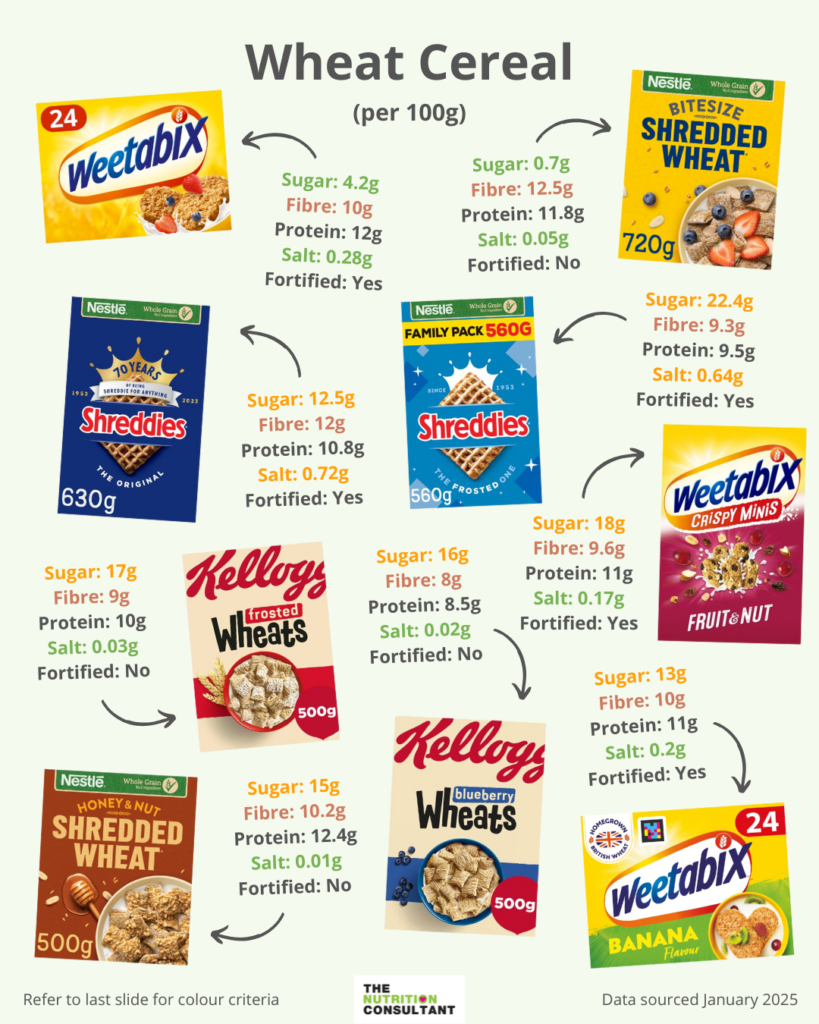

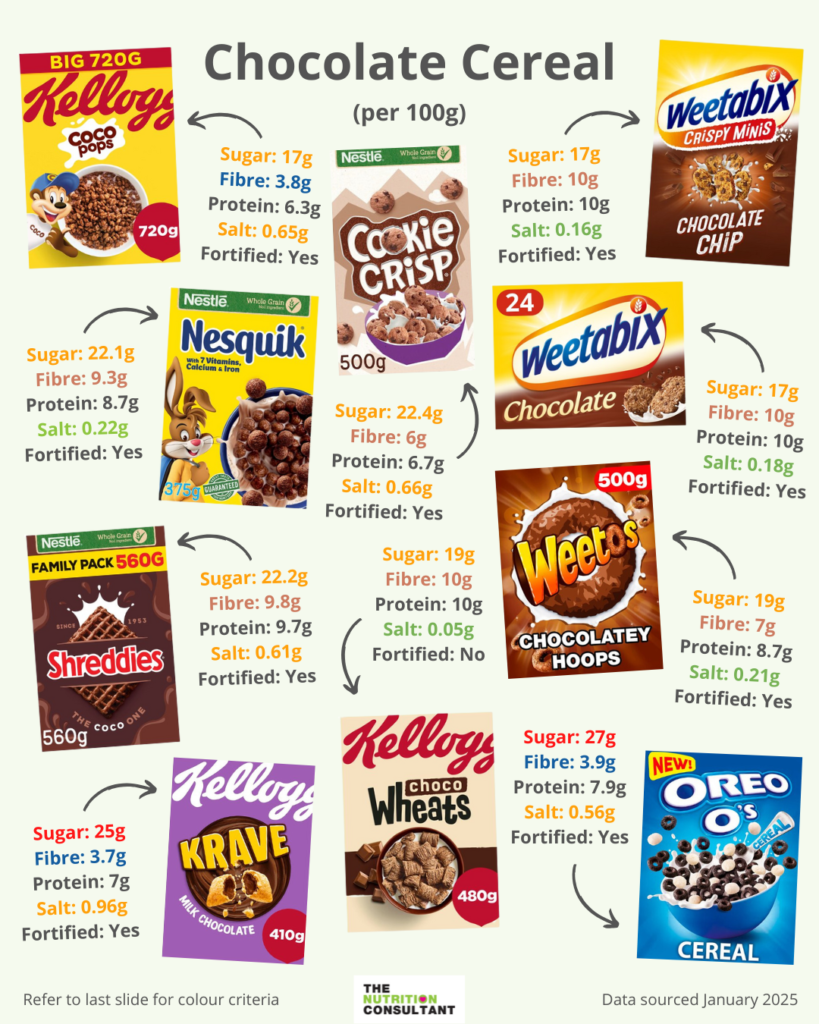
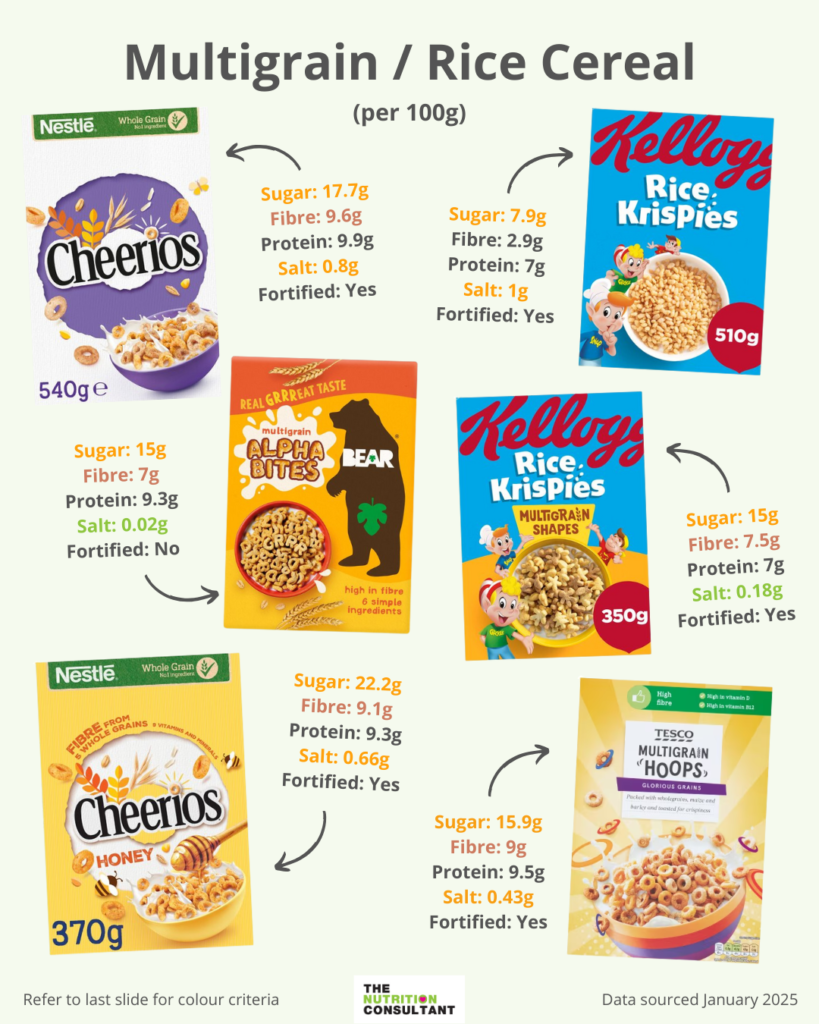
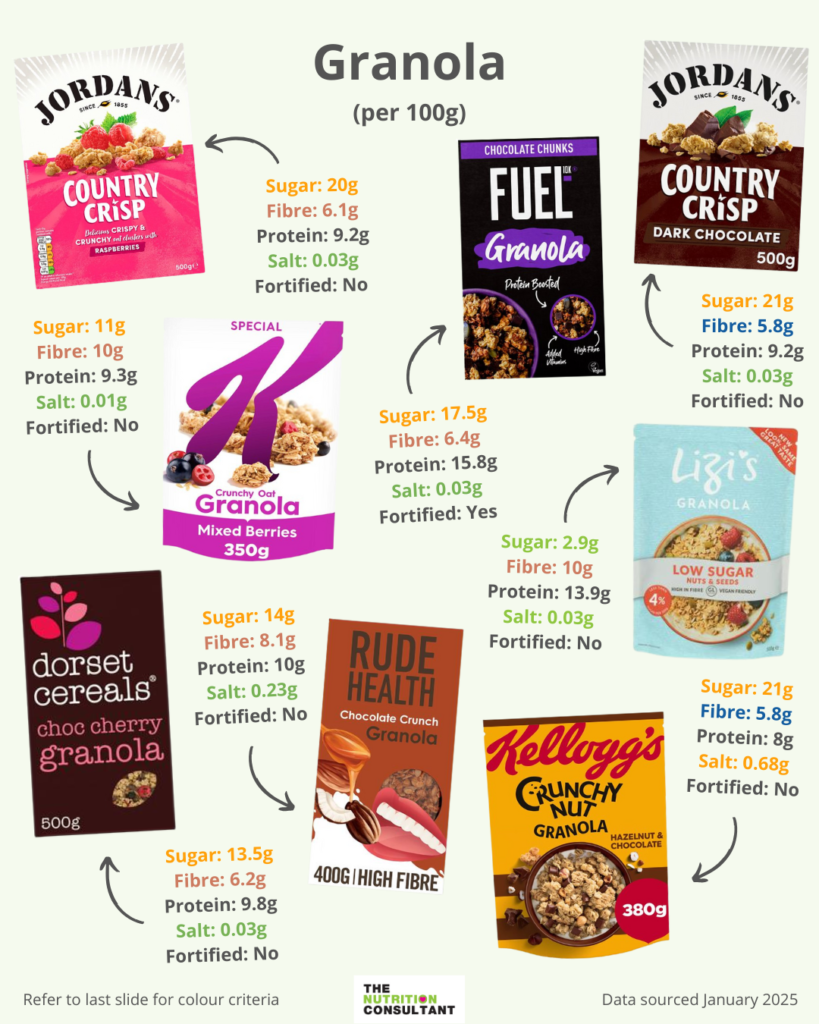
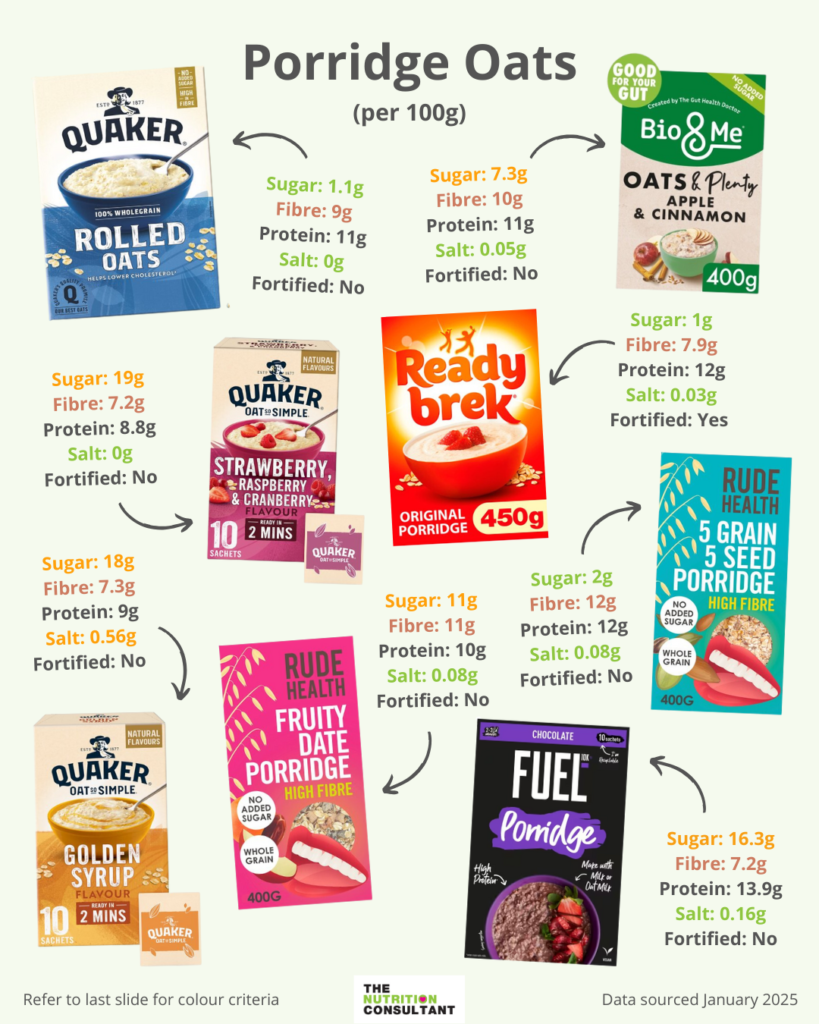
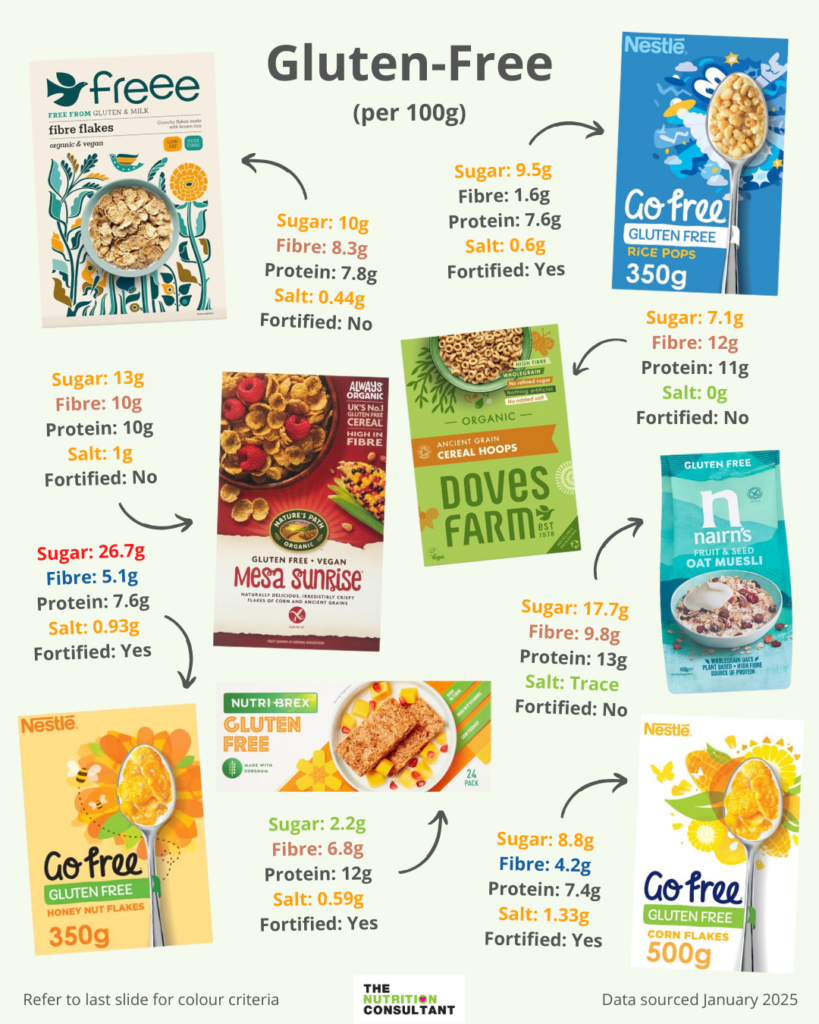
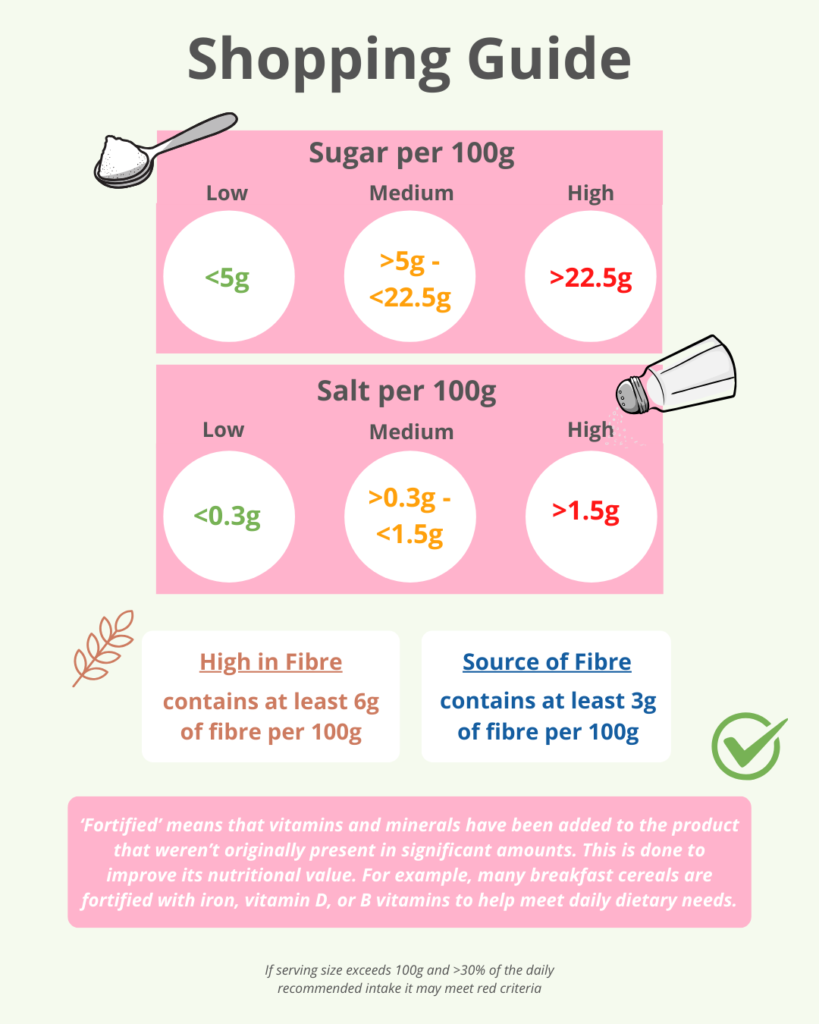
One thing to bear in mind is that some cereals are marketed to appear ‘healthier’ through marketing terms such as “no added sugar” or no “refined sugar”.
However, they may contain sugars in other forms such as purees, concentrates, coconut blossom nectar or syrups/honey which push the sugar content up (in exactly the same way table sugar would). Whilst they might be labelled “natural”, these sugars aren’t healthier alternatives. If you’re confused about this topic, I recommend reading this blog to learn more.
It’s also important to be aware that even if something says it’s “reduced sugar” it doesn’t mean it’s “low sugar” – as this simply means that it has less sugar than the original version. However, a quick look at a traffic light label will tell you whether it’s high, medium or low for sugar.
6 Family Breakfast Tips
1. Mix it Up
If your kids love sugary cereals, I recommend mixing them with another low-sugar/high-fibre option. You can start by adding a small amount of the healthier option, and then slowly increasing the amount until it’s half and half.
This will help reduce the overall amount of sugar in the meal, as well as boosting the fibre content.
Cereal snack tip:
Try mixing dry cereals such as Cheerios and Shreddies into a trail mix for a tasty snack.
2. Boost Your Nutrition with Cereal Toppers
One common thing people say to me is that they want to opt for ‘healthier’ cereals but they seem SO PLAIN compared to some of the more sugary variants.
That’s why I recommend adding cereal toppers. Not only to add plenty of flavours but also to boost your nutrient intake!
Here are some of my favourites:
Fruit – If you want to try some cereals lower in sugar but still crave that sweetness, try adding a handful of fruit for some natural sweetness. It’s also a great way to get a portion or two of your 5 a day. Fresh, frozen, tinned or dried fruit, it all counts!
Nuts & Seeds – These little nutrient powerhouses are great for adding crunch to cereals. I recommend adding a variety of nuts and seeds to maximise the nutrient content and flavour (you can buy pre-made mixed nuts/seeds from the supermarket). Please remember that for under 5’s these should be crushed or in the form of a smooth nut butter.
Yoghurt & Kefir – Plain natural or thick Greek yoghurt in addition to milk adds extra creaminess. If you like more sour tastes, kefir is a great option and a source of gut-loving probiotic bacteria (note: if you use plant-based yoghurt alternatives, try and choose one which is fortified with calcium and vitamin B12).
Spices – These are not just for savoury dishes! A sprinkle of spices such as cinnamon & mixed spice is great for adding flavour to plain cereals.
Cacao – Cacao nibs and cacao powder can add a hint of chocolate as an alternative to high-sugar chocolate cereals.
Ready-made toppers – Most supermarkets have a range of ready-made cereal toppers. Generally, these are a mix of chopped or ground nuts, seeds and dried fruits and can be useful for those that want to save time or want to include a range of foods without having to purchase it all separately.
Get creative and see what combos you like!
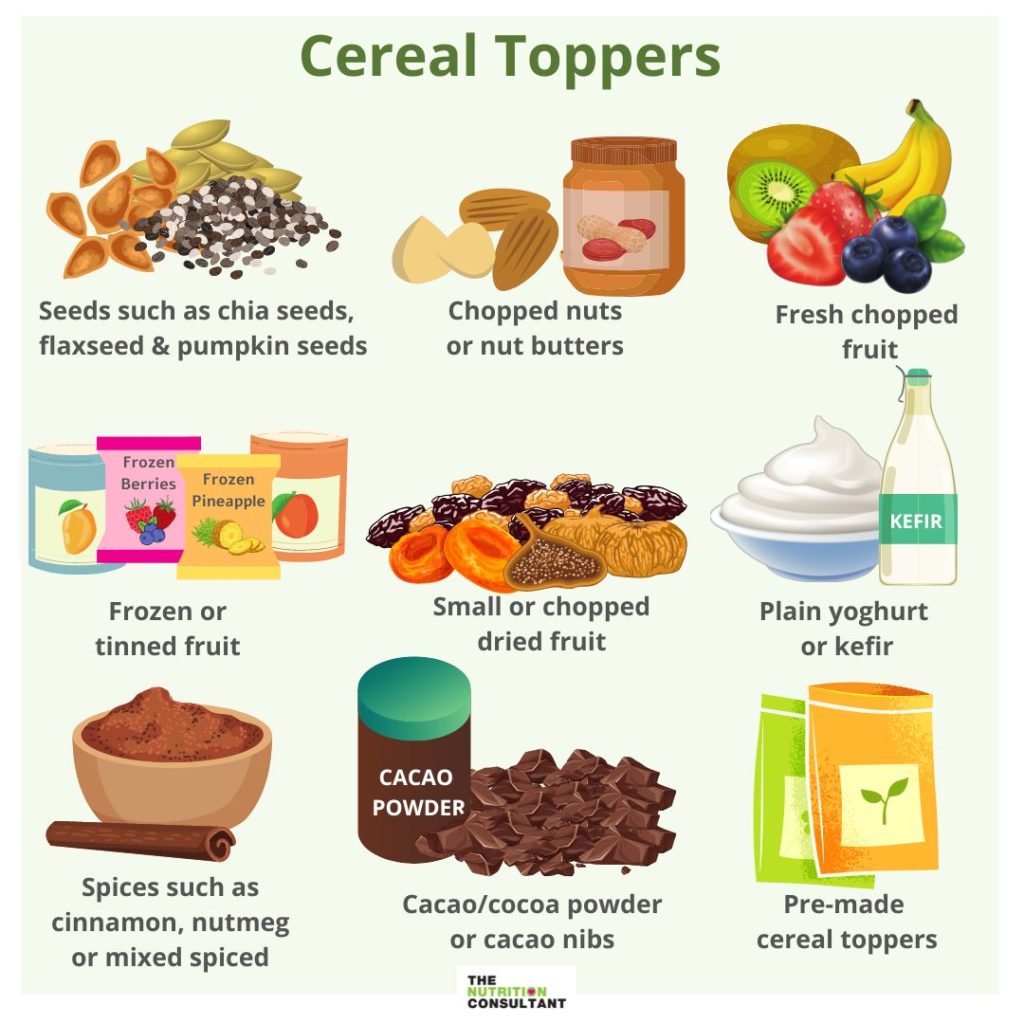
3. Balance is Key
Balancing your breakfast with a mix of carbohydrates, fats and proteins will help you feel fuller for longer.
This means that eating a carb-rich cereal by itself probably won’t be the most satisfying and you might find yourself crashing before lunchtime.
However, combining something carb-rich with a source of fat and protein like nuts, seeds or nut butter, can help keep you going right through till lunch.
Want to learn more about what a balanced plate looks like? Read this blog.
4. Make It the Night Before
Making your breakfast the night before is a great way to start the day off right! Not only does it save time in the morning, but it also helps reduce the ‘what’s for breakfast today?’ stress when you’re in a rush.
These are some of my favourite breakfasts to make the night before:
5. Make It a Part of Your Morning Routine
Taking the time to sit and enjoy breakfast with your family can help you get your day off to a good start.
If you struggle to get your kids to eat their breakfast before school, I recommend trying, where possible, to eat with them.
Try setting aside 15 minutes in your morning routine to sit down with your family and have a breakfast with no distractions (so no TV or social media if you can).
The more often you sit down with them and eat a balanced nutritious breakfast, the more they’ll see this as the norm and take on these behaviours themselves.
6. Plan Ahead
Meal planning is a great way to ensure you are getting a variety of nutrients in your diet.
Pre-planning a few breakfast options for the week ahead can help you save time and energy in the morning – as you don’t have to spend all that time rummaging through the cupboards looking for something to eat.
When I’m meal planning, I like to give my children a few breakfast options to choose from. That way they feel like they have a say in what they’re eating, and this can make them more inclined to eat their breakfast.
For example, if cereals are their preferred breakfast, try giving them the choice of some lower sugar options and ask what fruit they’d like to add on top.
If you have a bit more time on the weekend, you can also try letting them choose a healthy breakfast recipe that you can make as a family.
Healthy Breakfast Ideas
For Kids:
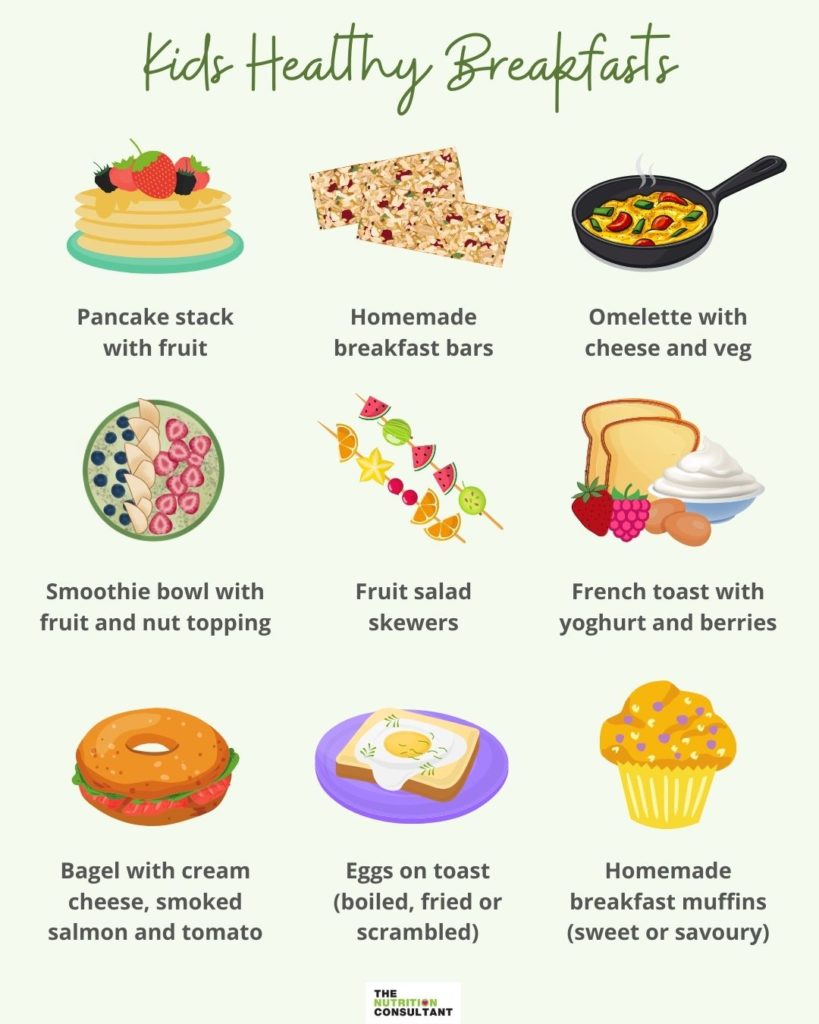
For Adults:


Breakfast Recipes:
Sweet:
Savoury:
Helpful Resources
Read this blog: Is Breakfast the Best Meal of the Day?
Summary
For a healthy start to the day, choose breakfast options that are low in sugar and high in fibre.
Balanced breakfasts keep us fuller for longer, so in order to stay energised until lunchtime, make sure you have a mix of carbohydrates, protein and fats.
For a nutrition and flavour boost, add some fruit, veg, nuts, seeds and spices to your breakfast.
Planning and prepping healthy breakfasts in advance can help you save time in the mornings.
